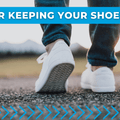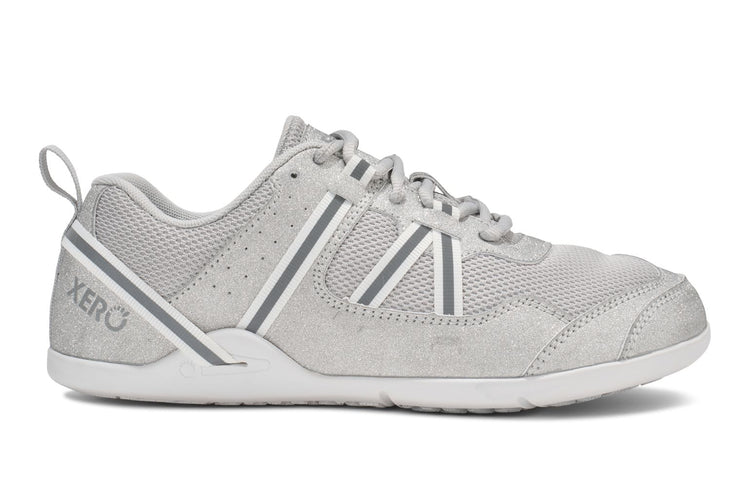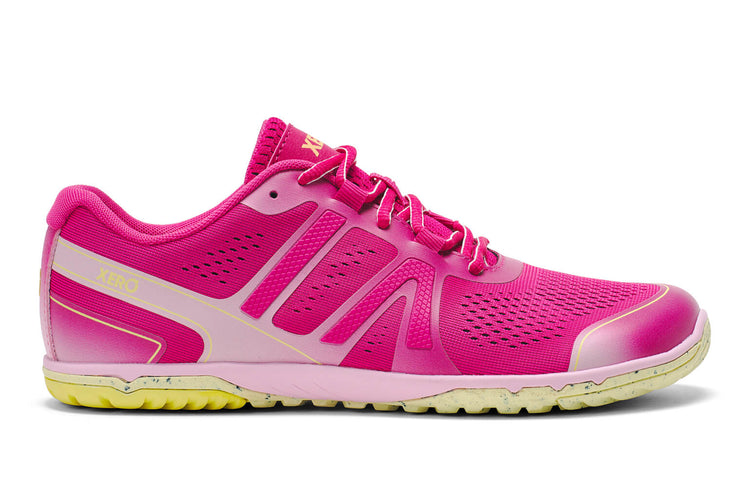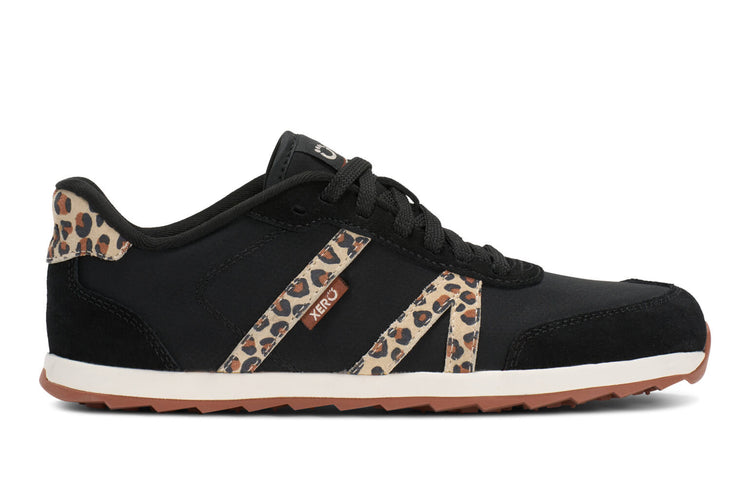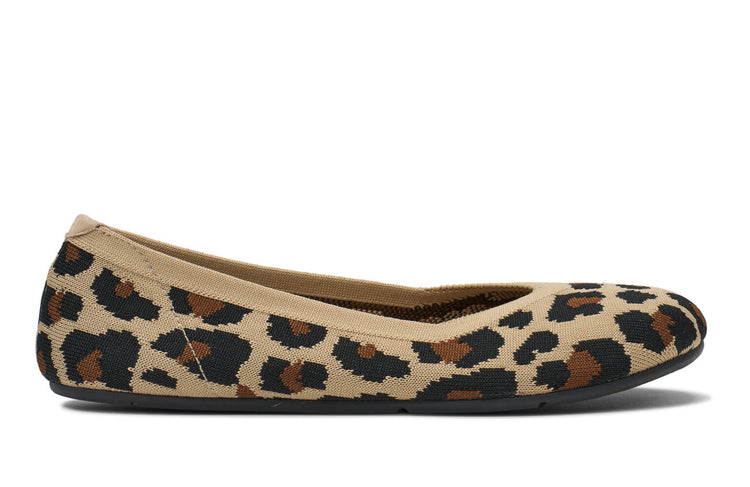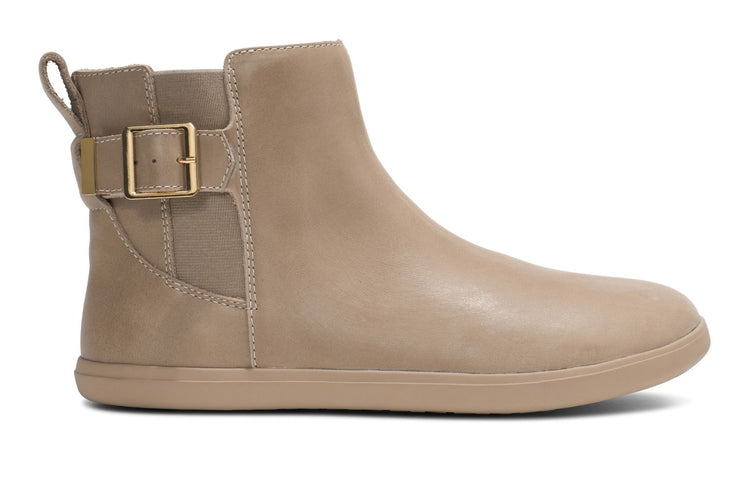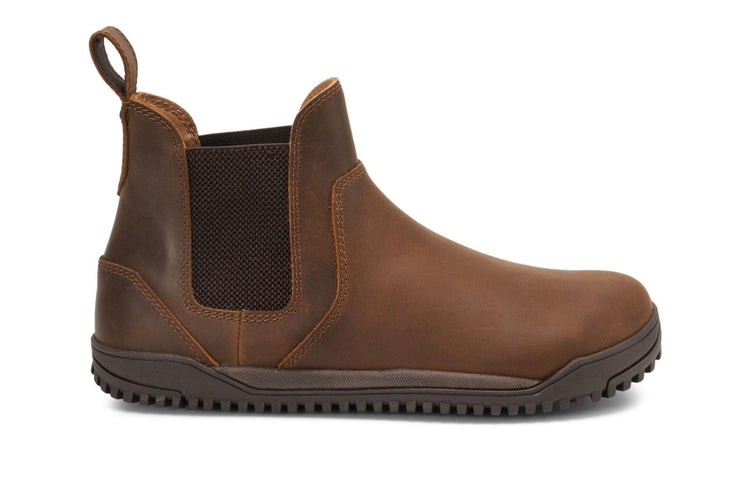“The Dream Shoe”: A Partnership with Xero Shoes & Born to Run 2 Authors
latest News
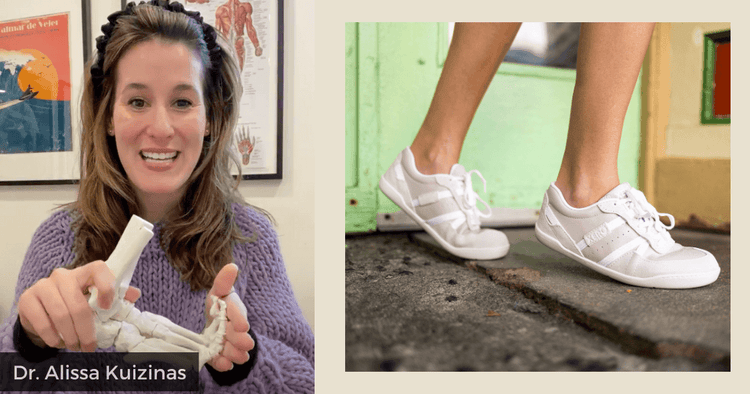
A Podiatrist Explains How Shoes Impact Your Foot Health
Massachusetts-based podiatrist Dr. Alissa Kuizinas (and Xero Shoes Partner) has more than a medical perspective on footwear. She struggled with foot discomfort for years. With each step she took, her big toe would jam against the inside of her shoes – “even with my ‘good shoes’ on,” she recalls. The $133 billion shoe industry has footwear specialized for every situation. Workout shoes. Hiking boots. Running shoes. Even walking shoes. And the solution to foot problems? The typical suggestion is more cushion, more support, and a more rigid structure to immobilize your foot. But is that the right approach to shoes? Your Foot Issues Might Be a Shoe Problem “Traditional medicine would recommend that I wear custom orthotics, limit my activity and wear stiff-soled shoes until the pain becomes bad enough to require surgery,” Dr. Kuizinas says. “I knew there had to be a better solution.” The deeper this foot doctor delved, the more she found that her feet weren’t the problem. It was her shoes! “Even though shoe companies spend millions of dollars on technology and design development, the shoes they produce and sell are doing a major disservice to human feet,” she explains. “From cushioning to heel-toe drops, stiff soles to narrow toe boxes, nearly every aspect of a modern shoe has a negative impact on foot movement. It leads to an epidemic of dysfunctional, weak, and malfunctioning feet. And most of us aren’t even aware this is happening!” Get Out of the Way of Your Feet “The primary purpose of shoes is to protect our feet from the elements and from different surfaces,” Dr. Kuizinas says. “They’re for when we are out in the world walking on a slippery or wet surface. Ultimately, shoes are really there JUST for that purpose. They don’t need to be bulky and restrictive, or supporting our feet. Our feet are designed to support themselves!” Think of any muscle in your body. If you use it, work it, and challenge it, what happens? It gets stronger. And if you don’t use it, or even worse, immobilize it, it gets weaker. The same is true of the muscles in your feet. Your Feet Are Made to Be Strong Your feet are made to support the entire weight of your body. They’re meant to be strong. For them to maintain that strength, they need to work. And that means your shoes shouldn’t be doing their work for them. So… why not just walk barefoot all the time? Research supports the idea of slight “protection” being beneficial. A study comparing outdoor barefoot walking with minimalist footwear found that the shoes improved walking form in both younger and older adults, and reduced risk of falling. Dr. Kuizinas recommends a ‘as little shoe as possible’ approach to footwear, putting the focus on building resilient, capable feet.“Rather than building up the shoe to try to externally support the foot and limit motion, minimalist shoes get out of the way of our feet,” she says. “They allow feet to function naturally, to move and bend. The transition to minimalist shoes involves stripping down the unnecessary and harmful components of modern shoes so that feet can be feet again!” When working with clients today, Dr. Kuizinas shies away from the term “minimalist shoes.” Instead, she likes to talk about “functional shoes” or “natural shoes.” “Natural footwear is really on the leading edge of shoe technology,” she says. “By stripping away the unnecessary and downright harmful features of shoes, we allow feet to function effortlessly as they were designed to!” And when we do that, we give our feet the chance to grow strong and capable... the core of good foot health. How to Find a “Functional” Shoe that Supports Good Foot Health Dr. Kuizinas has a three-point checklist of what she looks for in a functional shoe, which not-so-coincidentally match up with the three major functions of the human foot during walking. “The foot has three jobs: to be a ‘mobile adaptor’ or shock absorber when it first hits the ground, to be a rigid lever during push-off, and to be a sensor of the environment,” she explains. “As long as it can do these three things, it will function well.”Here’s how she says those functions should be reflected in the shoes you wear: Wide Toe Box: “Functional sneakers should have a wide, foot-shaped toe box. They’re broad enough to allow our big toe to sit in a proper alignment.” Flat & Flexible Soles: “Our feet contain 26 bones and 33 joints. And joints are designed to move! A flexible sole allows for natural foot movement. By contrast, stiff and rigid shoes with elevated heels prevent the joints from fully moving through their range of motion and limit the foot.” Minimal cushion and support: “A functional shoe should be only as cushioned as you really need. Overly cushioned shoes dampen your perception of what’s going on with your feet, and your ability to walk well.” If you follow these simple standards, you’ll find shoes that support your foot health by not doing so much to support your feet! Be Patient and Build Up to Barefoot Both from her personal experience and in her professional practice, Dr. Kuizinas recommends being patient when it comes to transitioning to full-time “functional” footwear. In the early days, she recommended a one-two approach of wearing functional shoes primarily for low-impact activities like walking and running errands, while also going barefoot around the house to help build resilience in the feet and ankles. “As your foot function improves, you’ll be able to tolerate less arch supportive shoes for greater amounts of time,” she explains.In not too much time, you’ll find yourself able to enjoy walking, running, hiking, and anything else you love to do more... because you’ll feel steadier and more stable on your feet. Click Here to Find the Best Barefoot Shoe For You.
Best Barefoot Shoes for Digital Nomads
Wearing super-light shoes can make you powerful as your connection to Earth grows with each step. Barefoot-inspired shoes fit this bill for nearly any use, whether on the trail, on the treadmill, on sandy shores or in your bedroom. Versatility and comfort are critical nowadays, so you need the best barefoot shoes for digital nomads.Here are eight excellent options from Xero Shoes. HFS II Speed Force II Ridgeway Z-Trail EV Kona Mika Prio Pagosa 1. HFS IIImagine going for a run and attending a birthday dinner afterward. You don’t have much time to change or room for extra clothes, so you need a versatile shoe for both occasions. Fortunately, the HFS II has your back with comfort and style.Xero Shoes upgraded the original HFS to produce an even more stylish sneaker for your lifestyle. The HFS II weighs only 8.3 ounces and is easy to run in due to its outsole inspired by tire treads. Plus, the top-tier comfort makes it one of the premier barefoot shoes for digital nomads.How can the HFS II feel super light but remain comfortable on your feet? The shoe equips a BareFoamTM layer to protect your feet and make your journeys easier. 2. Speed Force IIWhen high performance is necessary, you need the Speed Force II. This super-light shoe mimics the barefoot experience for your workout, morning commute and any other task you need to get done. At just 6.5 ounces per shoe, the Speed Force II is what you need for style, breathability and durability.Xero Shoes co-founder Steven Sashen designed the shoe with a Nike developer. He says it’s his preferred sneaker for training and racing. The Speed Force II joins other Xero Shoes with its wider toe box and non-elevated heel to aid your posture.3. RidgewayHitting the trail means you need maximum durability from the shoe and protection for your feet. Mud, rocks, dirt and more tax your boots and make them wear quickly, leaving you vulnerable to the terrain. You need hiking boots you can wear on your mountain adventures and at the restaurant for a friendly rendezvous.Xero Shoes presents retro-inspired Ridgeway, one of many barefoot hiking boots for men and women. . These shoes are waterproof and ready for the trail with their rugged construction and creative design. The 13-ounce boots are lighter than most running shoes you’ll find on the market, yet their comfort and functionality make them ideal for your trail-running needs.4. Z-Trail EVSometimes, the temperature gets too warm for tennis shoes. Your socks are necessary for comfort and protection, but the scorching ground makes you wish you had something lighter. Sandals are often too flimsy for athletic use, so how can you find a happy medium? The Z-Trail EV combines the versatility and durability of sandals for everyday use.While you might not associate sandals with hiking, the Z-Trail EV is ideal for the trail. The FeelLiteTM sole and the TrailFoamTM team up to provide traction, comfort and flexibility with your shoes. Each sandal weighs about 5.4 ounces, giving you the super-light feeling beneath your feet. Plus, the Z-Trail EV eliminates 70% of the unnecessary materials you typically see in sports sandals. These shoes utilize nylon sourced from recycled water bottles in their webbing, making them soft and quick-drying. You’ll enhance your comfort on the trail and support the planet with eco-conscious sports sandals.5. KonaFinding versatile shoes for casual wear is essential, as you need mobility when traveling from one place to the next. The Kona satisfies your flexibility needs as one of the best barefoot shoes for digital nomads. Pick up a pair for the beach, work or whatever your day calls for. This shoe reminds you of Hawaii’s Kona Beach and stays cool with its moccasin-inspired construction.The Kona is a solid shoe option for men because it blends into your desired style. Business casual meetings, friendly hangouts and dancing are only some of the occasions this shoe is appropriate for. The Kona provides flexibility thanks to the removable insole. The FeelTrueTM outsole protects your feet while feeling barely there as you stroll.6. MikaFreezing temperatures typically mean getting your snow boots from the closet. While practical, your shoes could lack in the style department or make you feel sluggish. Mika turns the tide by providing comfort, warmth and style in one boot.Heavy-duty boots could weigh multiple pounds and make walking in the snow feel arduous. However, the Mika only checks in at 12.3 ounces per boot, making each winter stroll much more manageable. These boots feel like they’re barely there, but the heat-reflecting warming insole and interior lining warm your feet. Plus, you get a water-repellant canvas for mitigating the cold precipitation on your path.The Mika from Xero Shoes is an excellent shoe choice for women because of its practicality and style. Its pink and black styles suit numerous winter occasions wherever you go.7. PrioWhile finding comfort in your shoes is one battle, getting the same for your kids can be even more challenging. Children’s feet are still growing, so they need flexibility and ergonomic design to ensure they can walk around school, the playground and your home without trouble. Some parents opt for barefoot shoes because research suggests children reap benefits from them.The kids’ version of the Prio makes shoes easier for your children, featuring a wide toe box and a natural fit. This shoe for children has more space between the lugs and a thinner sole to increase flexibility while protecting their feet from the ground. Plus, the shoe uses inspiration from huarache sandals with straps to prevent slipping on their heels. Your kids can use these shoes for playtime, running, climbing and other fun activities.8. PagosaCold mornings require a warm cup of joe and a comfortable pair of slippers. How can you combine comfort and functionality with slip-on shoes? The Pagosa’s faux wool warms your feet while providing flexibility through its collapsible heel. Step on the heel to make it a slipper, or slide your feet in to mimic a regular shoe. The Pagosa from Xero Shoes makes walking easy, whether around the house, the campsite or wherever your nomadic adventures take you.Comfort is key for the Pagosa, as its cozy feeling is unforgettable. The softness is ideal for older adults who desire increased comfort from their shoes but don’t want to go barefoot. A 2020 BMC Geriatrics research article suggests minimalist shoes could provide a suitable transition between shoes and barefoot for older adults.Finding the Best Barefoot Shoes for Digital NomadsShoe functionality is critical for the modern digital nomad. You need footwear to support your adventures on the beach, in the living room or at the office. Xero Shoes emphasize versatility with innovative style and design, ensuring you can take them from one scene to another. These eight barefoot shoes for digital nomads demonstrate flexibility without compromising comfort.The content of this post does not constitute and is not intended to be a substitute for professional medical advice, diagnosis or treatment. Always seek the advice of a physician or other qualified health provider with any questions or concerns you may have about your health or a medical condition. Beth is the Managing Editor at Body+Mind and a lover of all things health and wellness. She is a well-respected writer in the personal wellness space and shares knowledge on a variety of topics related to nutrition, fitness, holistic health and disease prevention. In her spare time, Beth enjoys cooking healthy recipes and trying out new fitness trends.
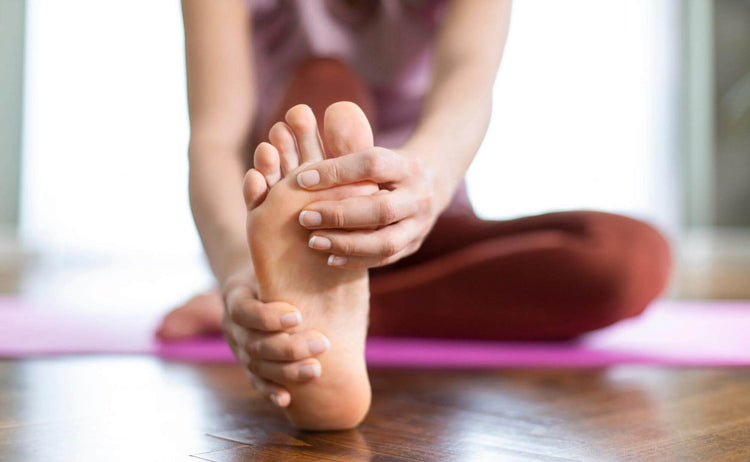
Why Barefoot Training Is Trending in 2024
Barefoot training is one of the hottest fitness trends in 2024. More fitness enthusiasts on social media — outside the mixed martial arts world — are discovering how significant gains are achievable without sneakers. Does barefoot training make sense for you? Does pumping iron while feeling the bare floor increase your strength? Should you go for a run without shoes on? Will you still go to the gym if everybody goes barefoot? Find out whether training barefoot is just a fad everyone will soon forget or if it’s genuinely beneficial. Is It Better to Train Barefoot or With Shoes? Barefoot and shoe training methods have pros and cons. What suits you depends on what you intend to do and your physical condition. Going barefoot gives you tremendous insight into your movements. Each foot of yours has more than 150,000 nerve endings at the bottom. They help you understand what you’re standing on and how you’re stepping on it. Your brain receives new sensory information. These sensations can inform your overall movement because you have a better idea of your body’s relationship with the space it occupies. The more you train with no or minimal footwear, the more you strengthen your feet and ankles. You gain better flexibility because they work together to keep you balanced and upright. This benefit can help expand your range of motion and enhance your stride. Activating the smaller muscles on the bottom of your feet can help you maintain proper posture and feel more stable. Training barefoot lets you recognize issues with specific body parts that are less noticeable when you wear shoes. For example, you may discover your ankles are less mobile than they should be. Such findings can help you determine where to focus your training next to address your weaker points. Regarding glute and core activation, barefoot training is biomechanically advantageous. It aids the mind-muscle connection, helping you work out more efficiently. On the other hand, shod training protects your feet from ground hazards. Shoe design innovations provide excellent support to feet and ankles — a must when undertaking most athletic pursuits. Footwear contributes to comfort, stability and motor control. Wearing the right pair of shoes can provide more traction on surfaces, helping improve your performance and boost your confidence. Somewhere in the middle is barefoot-inspired shoes. For instance, Xero Shoes’ barefoot footwear for women provides excellent ground feedback while offering great protection. How Do You Train Barefoot? Training or working out without shoes is promising on various levels but requires circumspection. Remember these three tips when transitioning from shod to barefoot training. 1. Ensure You're Injury-Free Regularly engaging the muscles in your feet makes them more immune to injury. Many fitness enthusiasts are going barefoot precisely to make them less prone to sprains and strains. However, your feet and ankles can only get stronger when they’re already uncompromised. Tossing your shoes when training or working out when nursing or recovering from a foot or ankle injury may do more harm than good. Take precautions if you have preexisting foot or ankle conditions. Some sprains, strains and breaks take more time to heal than others. For instance, a high ankle sprain usually requires physical therapy to prevent reinjury. This injury accounts for only 14% of ankle sprains and half of its cases take up to six months to recover. Monitor your injury’s progress to see whether you’ve completely healed. Self-assessment helps but isn’t always enough. Consult your health provider for expert advice before engaging in intense physical activity without foot and ankle support. Let your physician run some tests and closely examine you to determine whether you’re healthy enough to go barefoot. You may feel well, but your test results may reveal a cause for concern that can lead to a severe ailment when training without footwear. 2. Acclimate Your Feet and Ankles Take things slow if your doctor gives you the go-ahead signal to do barefoot training. Walking and running without shoes takes some getting used to. Give your feet and ankles ample time to adjust and gradually build strength. The runners who switch from shod to barefoot spend about two weeks walking around without footwear. After this initial period, they begin running in place and trying flat, smooth surfaces. Picking up your speed slowly and steadily and increasing your mileage by 10% max per week should be part of your routine. The transition may cause discomfort. Feeling sore is your body’s way of telling you you’re doing too much too fast, so dial back your barefoot training to help your feet and ankles adjust to moving without support. Wearing minimalist shoes can help ease your shod-to-barefoot transition. Unlike traditional running shoes, they have no high arch support and no thick soles, so they complement your body mechanics well. Many put on men’s barefoot performance footwear from Xero Shoes when training in the gym, on the track, on a pickleball court or in any environment. They’re super comfy and enjoyable to wear. More importantly, they give your brain the feedback it needs to help you move effectively and efficiently on any terrain. 3. Explore Various Barefoot Exercises Aside from walking, running and yoga, the most common barefoot exercises are squats, deadlifts, box jumps, stability ball exercises and single-leg stands. They show you can incorporate barefoot training into most workouts, whatever your fitness goals are. There’s a caveat — some gyms and health studios prevent you from training barefoot to keep their areas hygienic. Going barefoot outdoors is only advisable in some cases. Rocky surfaces that absorb the sun’s heat — such as concrete and asphalt — can jeopardize your foot or ankle health. That’s why investing in barefoot-inspired shoes for working out and weightlifting is wise. They can protect your feet from jagged terrain, but you can pleasantly feel they’re barely there. You may forget you’re wearing them when you begin training. Pieces of minimalist footwear are stylish enough to earn a spot in your shoe collection, but one pair is usually enough. You can wear these shoes when strolling, running or playing sports to cover your feet while enjoying the many benefits of going barefoot. Embark on Your Fitness Journey Barefoot Working out without shoes may look and feel strange at first, but it has numerous merits. While barefoot training isn’t for everybody, it’s worth considering if you have the feet and ankles for it. The content of this post does not constitute and is not intended to be a substitute for professional medical advice, diagnosis or treatment. Always seek the advice of a physician or other qualified health provider with any questions or concerns you may have about your health or a medical condition. Beth is the Managing Editor at Body+Mind and a lover of all things health and wellness. She is a well-respected writer in the personal wellness space and shares knowledge on a variety of topics related to nutrition, fitness, holistic health and disease prevention. In her spare time, Beth enjoys cooking healthy recipes and trying out new fitness trends.
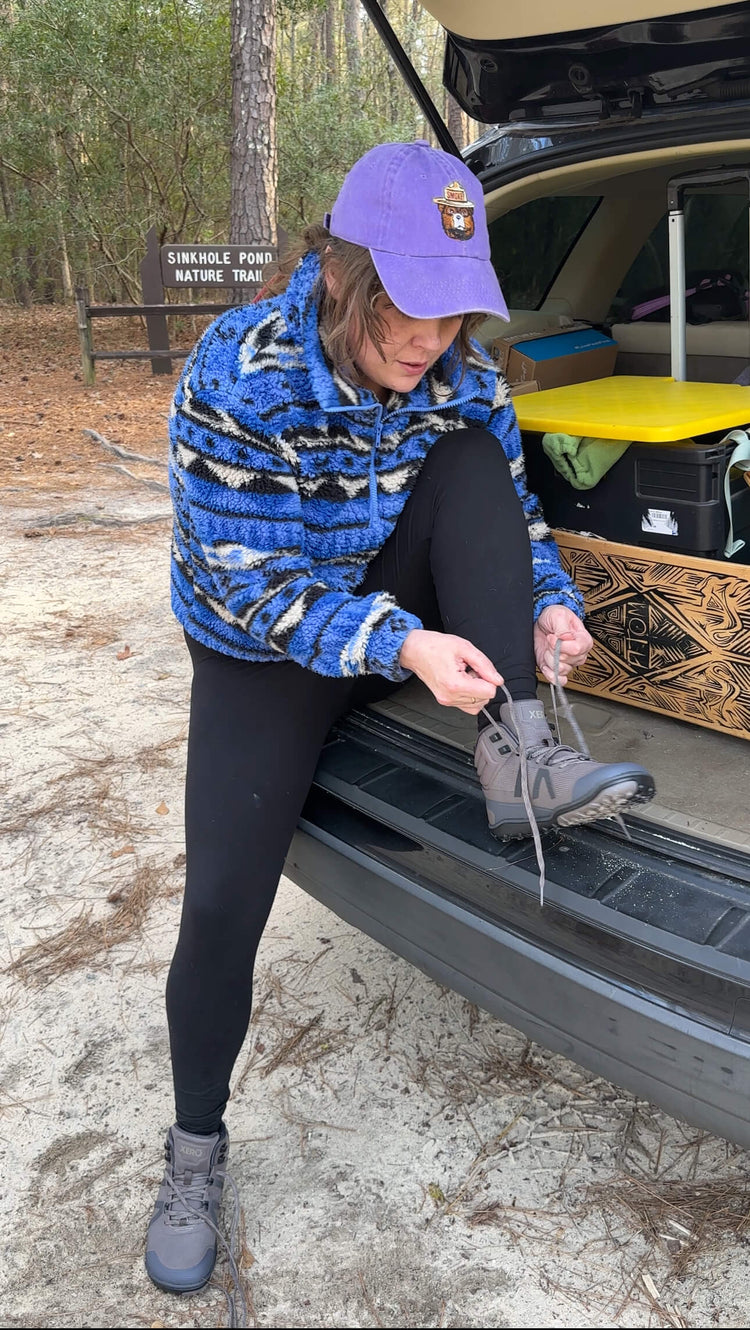
Get Ready With Me for a Rainy Hike
Xero Shoes partner, @kalihikes tests out the Xero Shoes Ridgeway for a rainy day hike with her pup. Waterproof boots. Warm, dry feet. No worries about blisters. And a storm rolling in. Does it get any better?Try the RidgewayCombine the allure of retro style with cutting-edge barefoot-friendly technology, and you get the Ridgeway – a hiking boot with a rugged canvas upper with suede accents. It’s ready to conquer technical trails with friends and comfortable enough to enjoy a beer afterward.More Waterproof Hiking ShoesExplore our entire collection of barefoot waterproof shoes and boots.More Blogs on Barefoot Hiking Shoes Best Xero Shoes Hiking Boots, According to Top Media Xero Shoes Lightweight Hiking Boots are Under 14oz Family of 7 Hikes the CDT in Xero Shoes
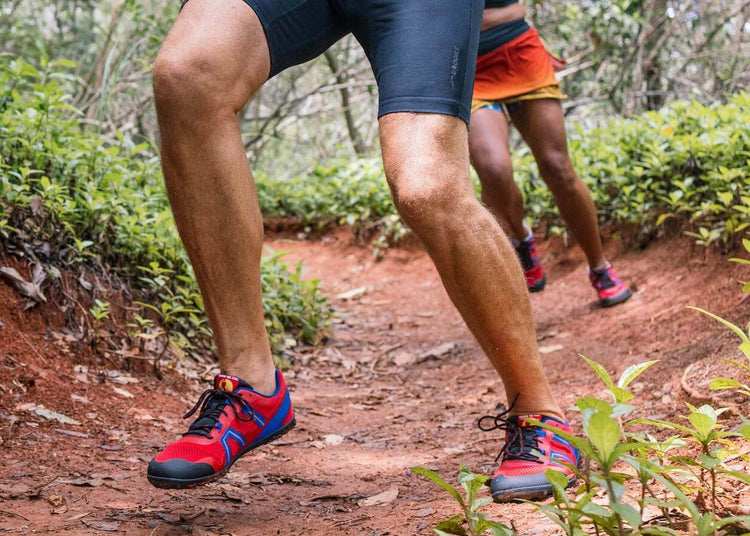
How to Be Lighter on Your Feet While Running
Why You Want to “Run Lighter” Running lighter can have three significant effects on your running: Make running fun Become more efficient Help reduce injury risk How do you run lighter? It just takes a few minor form tweaks that you’ll discover below. Use Sound to Know How “Light” You’re Running The sound your feet make when they hit the ground tells you a lot about your running form. If you hear thuds or slapping noises, you’re “running heavy.” These sounds can indicate that you can improve your running form. Once you address your form, those sounds will not only go away, but you will improve your running efficiency. So, as you explore the tips, below, use the sound of your feet as feedback – your built-in coach. Tips for Running Lighter on Your Feet What changes to your form can help you run lighter? Here are the top tips runners use to improve their form and run lighter on their feet: Make sure your feet land under your body (avoid overstriding) You want to land forefoot or midfoot Let your heels touch the ground Place and lift your foot off the ground as you run Use cues to help avoid plopping your feet Keep your core engaged Pick up your cadence Run barefoot, or in minimalist shoes Let’s dive into each tip. 1) Make sure your feet land “under your body” Landing with your foot too far in front of your body means you’re overstriding. It’s like putting on the brakes each time your foot touches the ground. Why do runners need to overcome this habit? Research shows that overstriding increases forces that go into your joints (rather than letting your muscles, tendons, and ligaments mitigate force). And many researchers believe it's the leading contributing factor for getting injured. When you run, aim to have your feet land under your body, and not out in front. To get a feel for this, we suggest exaggerating this by putting your feet “behind you” when you land. Of course, you won’t actually be able to do this, but if you try, it will highlight what overstriding feels like. 2) Land forefoot or midfoot The type of footstrike is important for running lighter. Ideally, you want a forefoot or midfoot strike instead of a heel strike. When combined with landing under your body, landing mid- or fore-strike means you're using your legs as springs, starting feet first. If you land on your heel, you've lost the first spring in your leg. Do NOT reach out with your foot to land on your forefoot or midfoot - in fact, it’s the exact opposite of what you should be doing. Instead, land with your foot underneath your body (tip #1). When you do this, it's almost impossible not to land on your forefoot or midfoot. 3) Let your heels touch the ground If you're not used to landing on the ball of your foot, it CAN make your calves and Achilles work harder. Some people never let their heels touch the ground (even in shoes!), but there's no inherent benefit for doing that. In fact, if you don't let your heel come down as far as it feels right, you're not fully using your Achilles -- the best spring in your body -- to give you "free energy" when it un-stretches. Once you land on the ball/midfoot, you can let your heel drop if it feels better to do that. It will feel better or worse depending on whether you’re: Going uphill or downhill On a flat surface or an uneven one Moving faster or slower 4) Place and lift your foot off the ground as you run Many runners practically slam their foot onto the ground, especially if they’re overstriding. Instead, think about “placing” your foot on the ground, like how you would place a dish on a table… gently. If you land with your foot under your body (tip #1), and you land midfoot or forefoot (tip #2) this is much easier to do. In fact, it’s almost automatic. To get your foot off the ground, most runners PUSH their toes into the ground. Not surprisingly, this is called “toe-ing off”. And when you toe off, you’re using your calf more than necessary, wasting energy. Instead, think about lifting your foot off the ground by lifting your knee, or pulling your foot off the ground (both of which, technically, happen by flexing your hip). An image I like to use is stepping on a bee – you wouldn’t PUSH your foot to get off the bee, since that would drive the stinger further into your foot. You would reflexively use your hip flexor to LIFT your foot off the ground. Both “placing” and “lifting” can keep you light on your feet. 5) Use a cue to help you “un-plop” your feet This is actually similar to “placing” your foot but with a twist. Many people “plop” their feet on the ground and leave them there for too long. Ideally, to run lighter, you want your feet on the ground for as little time as possible. The actual amount of time your feet are on the ground will change based on your running speed, but this tip will help you find the ideal time, no matter your speed. Coaches use a few different cues to teach runners how to avoid plopping. It helps to pretend that… You’re running on hot coals or eggshells Your feet are wheels, and you want them to touch where the wheel meets the ground The ground is moving below you like a treadmill, and you want to move your feet at the same speed as the treadmill Think about lifting your feet off the ground before they even contact it Whichever analogy you choose, you must find your own way of meeting the ground lighter with your foot and keeping it on the ground for as little time as possible. Remember to listen to the sound you are making as your foot hits the ground and use that sound as a coach. 6) Keep your core engaged Core engagement is important for light running. But it’s not just having strong abs. When you run, think of your body as a spring. If you collapse in your midsection, you’re weakening the spring and making it less efficient and, therefore, making it harder to run. Keeping your core engaged while running is about maintaining a gentle but consistent engagement of your abdominal muscles. Imagine lightly drawing your belly button towards your spine in a gentle, controlled manner that doesn't hinder your breathing. This should feel natural and sustainable throughout your run. 7) Pick up your cadence Your running cadence refers to the total number of steps you take per minute. Most people think there is a target cadence of 180 strides per minute. Contrary to popular belief, there’s no optimal running cadence. Some successful runners do more, some do less. That said, most runners run with a cadence that’s too slow. Moving your feet faster gives you less time to keep your feet on the ground. That’ll help you learn to place/lift, “un-plop” and avoid overstriding while you run. So, on your next run, pick up the cadence just a bit without running faster. It’ll feel odd at first because you’re doing something different. But once you get used to that new cadence, try picking it up a BIT more. You’ll find a sweet spot that keeps you lighter on your feet without feeling awkward. And, yes, if you’re inspired to run with a metronome, it could help ;-) 8) Run barefoot, or in minimalist shoes Taking off your shoes and running barefoot can improve your technique. Of course, this isn’t always possible, so wearing a minimalist shoe can help. You don’t need to switch to a barefoot shoe, or barefoot running full time, but doing some barefoot running can highlight some form flaws that you would never notice in a “normal” shoe. In short, running barefoot with good form feels good, and bad form feels bad. If you just explore the tips above while running barefoot, you may find that last little “hitch in your giddyup”. If you want to run barefoot, use these tips: Run on a smooth, hard surface. This will give you the most feedback. A sidewalk or bike path is good. Grass is not great because it’s sort of like taking the padding from a shoe and covering the world with it. Plus, the ground is rarely even, and you can’t see things you might not want to step on… or in. Start SMALL. Let your first barefoot run be 20-30 seconds. Yes, SECONDS. Then, the next day, see how you feel. If you’re sore like you just went to the gym, that’s good. Rest and repeat until you enjoy those 20-30 seconds… then add 10 seconds every time you feel ready If barefoot isn’t for you here’s how barefoot shoes can help improve running form: Barefoot shoes have a wider toe box that allows toes to splay, and move naturally, which can improve posture and balance. Plus, it feels great to not have your toes all squished. Truly barefoot-style shoes have a non-elevated heel (a “zero-drop”) which naturally encourages runners to land more on their midfoot or forefoot rather than the heel. Normal shoes with a “drop” will shift your center of gravity forward, and adjusting to that can put strain on your back, knees, ankles, and hips. Minimalist and barefoot shoes are lightweight shoes that do not have unnecessary padding. They let you use your muscles, ligaments, and tendons as natural shock absorbers and springs (better than any man-made foam!) They mimic the feeling of running completely barefoot while giving you a layer of protection. Barefoot shoes don’t “support” your arch which, like supporting any joint, makes the surrounding tissues weaker. Research shows that merely walking in a barefoot shoe builds foot strength as much as doing a foot exercise program. So barefoot shoes let you build strength in your feet and legs naturally the more you wear them. When your feet and legs are stronger, you can run longer distances without feeling fatigued. Even if you run in “normal” shoes, barefoot shoes are great for active recovery and that strength-building I just mentioned. So slip them on once you’re done with your “normies.” The content of this post does not constitute and is not intended to be a substitute for professional medical advice, diagnosis or treatment. Always seek the advice of a physician or other qualified health provider with any questions or concerns you may have about your health or a medical condition.
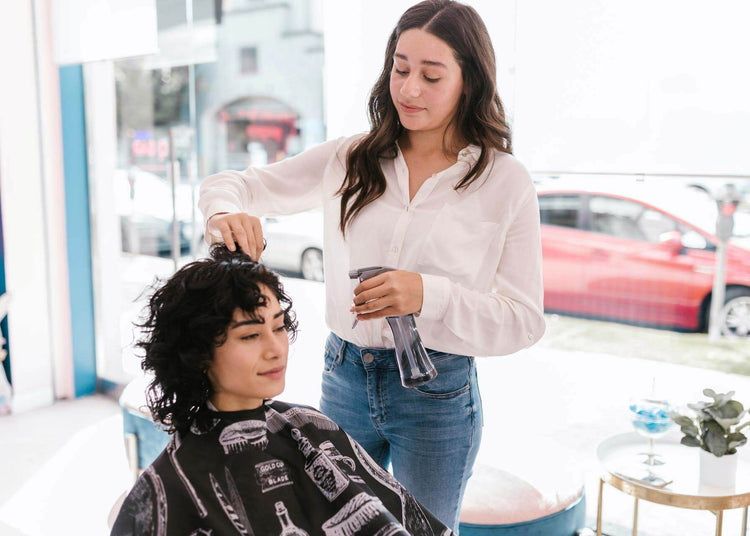
Smart Hairdressers, Stylists, and Barbers Have Switched to Minimal-Style Shoes
If your feet don’t feel as good at the end of your shift at the salon or barber shop – plus errands, social life, away from work – as they did at the start… then it’s time to reconsider your choice in footwear. And what if the best pair of shoes for all-day comfort is the opposite of what “Big Shoe” has been pitching? What if all the features they say should help you actually get in the way or even cause the problems they claim to cure? We realize this may sound counterintuitive (or even come off as crazy). However, thousands of people who work on their feet have made the switch to barefoot shoes. Read reviews of barbers who made the switch to Xero Shoes and never looked back: All the features I love about Xero Shoes plus more durability and slip-proof traits make it the perfect shoe for work. The professional style makes them great for more formal environments. In this post, you’ll discover how switching to barefoot shoes can help you enjoy healthy feet at the salon, at home, or anywhere. What Shoes Make Sense For Hairstylists? Before we discuss barefoot shoes and the differences that can help hair stylists, let’s look at what shoes make sense for people who work on their feet all day for a living. Working as a hairstylist, you need high-quality footwear that will… Allow you to move efficiently on unforgiving salon floors. Offer a comfortable fit for long days. Provide traction and stability. Shoes must have good grip or tread for slip resistance. Be extremely durable. Be easy to clean and maintain. Offer protection from various accidents or spills that can occur in salons or barber shops. Look professional in a salon or barber shop setting (of course, this varies on your salon’s dress code). Why “Normal” Shoes For Hairdressers Don’t Compare Before discussing the benefits of barefoot shoes for hairstylists, let’s look at the problems “normal” shoes can create: To summarize, “normal” shoes… Have a narrow, pointed toe box. This squeezes your toes together, leading to foot problems and balance issues. Have a raised heel, which negatively affects your posture, putting strain on your ankles, knees, hips, and back. Have excessive padding, which mutes the feedback the nerves in your feet send to your brain… making you less stable and confident as you move around the shop. Have stiff soles, limiting your feet’s natural movement. Once again, this can affect your balance and agility. Are heavier compared to barefoot shoes. The weight of normal shoes will slow you down over the course of a long workday. The things listed above can negatively impact your health and well-being over time. How Do Barefoot Shoes Compare? For hairdressers, stylists, and barbers, barefoot shoes (also called “minimalist shoes”) address the issues that normal shoes can bring about. Barefoot-style shoes… Have a wider, foot-shaped toe box, which allows your toes to spread naturally. Are flexible and allow for natural movement. Have a non-elevated heel (also called “zero-drop”), to help improve your posture. Are low to the ground for balance, mobility, and agility. Allow you to strengthen your feet and become their own support. Are lightweight — so lightweight, that many salon or barber shop employees forget they’re wearing them (and that’s not an exaggeration)! 3 Fantastic Benefits Hairstylists and Barbers Get Wearing Barefoot Shoes Here are three significant benefits that hairdressers and barbers will get when they make the switch to barefoot shoes: They Are (Extremely) Lightweight Busy salon or barber shop workers deal with walking around for long periods of time. Wearing heavier shoes will weigh you down throughout the day. “Normal” shoes tend to be heavier, while barefoot shoes are lightweight. For salon workers, retail workers, or anyone who works on their feet, barefoot shoes are the ideal choice. With minimalist-style shoes, you can be quick and light on your feet instead of dragging heavy shoes around during a long shift. How lightweight are they? We’ve heard many stories about people forgetting to take their shoes off when they come home from off after a long shift. They Have Zero Heel-to-Toe Drop Traditional shoes place your heel higher than the ball of your foot. This is known as a shoe’s “heel-to-toe drop.” The heel-to-toe drop for what some consider “normal” shoes typically range from 8-12 millimeters, however, even a small drop is a problem. Why is this bad? This “drop” shifts your center of gravity forward, and adjusting to that can put a strain on your body, including the back, knees, ankles, and hips. Barefoot shoes, however, have zero heel-to-toe drop, also referred to as “zero drop”. This means there is a uniform sole height without any difference between the heel and the toe. Zero-drop shoes mimic the natural barefoot position on a flat surface, allowing for more natural posture, which can take the strain off your ankles, knees, hips, and back. Salon and barber shop employees will benefit from better alignment and balance throughout long shifts on their feet. Your Feet Become Their Own Support While you may think added support is an important feature for your footwear, it may actually be taking away from your health. The issue with “normal” shoes with padding is that they restrict your feet from moving and your toes from spreading out. Why is this bad? Think of it like wearing a cast — when movement is restricted, your joint mobility is reduced, causing the muscles to weaken. You can apply this analogy to wearing “normal shoes”, which can greatly restrict your movement. By comparison, barefoot-style footwear purposefully does not provide external arch support. This feature helps you to develop foot strength to support the arch naturally. Research from Dr. Sarah Ridge concludes that merely walking in barefoot shoes builds foot strength as much as a foot-strengthening exercise program would provide someone. So, as a hairstylist, you can build foot strength just by walking around in minimalist shoes as you go about your day at work! Barefoot shoes have a flat sole with no built-in support and no extra midsole foam that breaks down unevenly, making them the best shoe if you think you do want or need an insole. Xero Shoes: Find The Perfect Shoes for You If your feet are sore from standing up all day, we invite you to try Xero Shoes. They are reliable and comfortable shoes for hairstylists, ideal for long days at the salon. Try our slip resistant Prio All-Day SR, or any of the other barefoot-inspired shoes and boots that are perfect for anyone working on their feet! [product_category category="prio-all-day-sr" columns="2"]
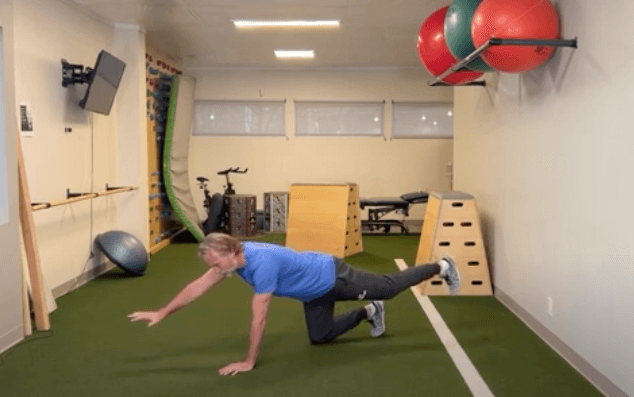
4 Natural Movement Techniques to Try For Yourself (Videos)
Reconnect with Your Body: Discover Natural Movement This blog features workout tips from Erwan Le Corre: Founder of MovNat, Affiliate of Xero Shoes www.movnat.com @movnat Erwan Le Corre Provides 4 Techniques to Help Optimize Natural Movement In a world where our lives are increasingly sedentary, finding our way back to the basics of movement is not just refreshing—it's essential. Erwan Le Corre founded MovNat, a physical education and fitness method for real-world physical capability. Erwan shares a video series featuring four techniques that promise to revolutionize how you move naturally. Whether you're a fitness enthusiast, a professional athlete, or someone looking to improve your physical well-being, Erwan teaches you to discover the freedom of natural movement. Rediscover Natural Movement With These 4 Techniques Natural movement is twofold: First, how your footwear allows your feet to move and feel is essential. Second, the ease and efficiency of your movement matter. In these four videos, you’ll learn the following techniques: Running – How to run efficiently and economically. Balancing Walk – How to develop better balance while walking on a narrow surface. Foot-Hand Crawl – How to walk on all fours using an efficient pattern that will save you much energy. Leg-Swing Jump – How to jump across gaps by landing softly and safely. Let’s dive into each technique and learn more about natural movement! 1. Unlocking the Art of Proper Running Form In this video, Erwan teaches you the fundamentals of efficient running, starting with proper posture. Before taking a step, align your spine from head to toe. Running should feel comfortable and natural. Land lightly on the ball of your foot so you feel light and elastic in your movements. Practice a slight forward leaning at the ankle level to propel yourself forward with minimal effort, making running more efficient and enjoyable. 2. Balancing Walk for Improved Balance Erwan teaches you a simple exercise and additional challenges to enhance balance. The balancing walk involves standing on one leg and experimenting with moving the other in various directions. The foundation of better balance begins with ensuring a vertical alignment of the body. To simulate balancing on a narrow surface, walk in a straight line with one foot in front of the other. As you improve, you can progressively introduce more challenging surfaces, like a two-by-four, to safely improve balance. 3. Crawling: The Blueprint of Movement Erwan spotlights crawling, a fundamental natural movement that is often overlooked in adult fitness regimes, and a core technique in MovNat training. The knee-hand crawl exercise involves moving opposite sides of the body simultaneously in an X pattern. Once comfortable, you’ll progress to the foot-hand crawl, which requires advanced balance and stability in a slightly elevated position. You’ll learn the most efficient way to crawl: moving forward through a push-off from the feet and backward by pushing off with the hands. 4. Leg-Swing Jumping In this video, Erwan demonstrates the leg-swing jump technique to overcome real-world obstacles efficiently and with minimal energy expenditure. You’ll learn to use a "one-two" landing pattern to land softly and maintain stability. This method is beneficial when the obstacle is not too wide yet too challenging for a simple step over. Start with ground-level exercises and progress to practicing the technique at increasing distances and eventually incorporating environmental variables. This gradual increase in complexity allows for skill development and confidence in using the leg swing jump in various scenarios. Embark on Your Natural Movement Journey Reconnect with your body's natural movements and develop a more intuitive relationship with yourself and the natural world. We hope this video series helps you rediscover the basics of movement. Learn more about MovNat and check out their online e-courses. The content of this post does not constitute and is not intended to be a substitute for professional medical advice, diagnosis or treatment. Always seek the advice of a physician or other qualified health provider with any questions or concerns you may have about your health or a medical condition.
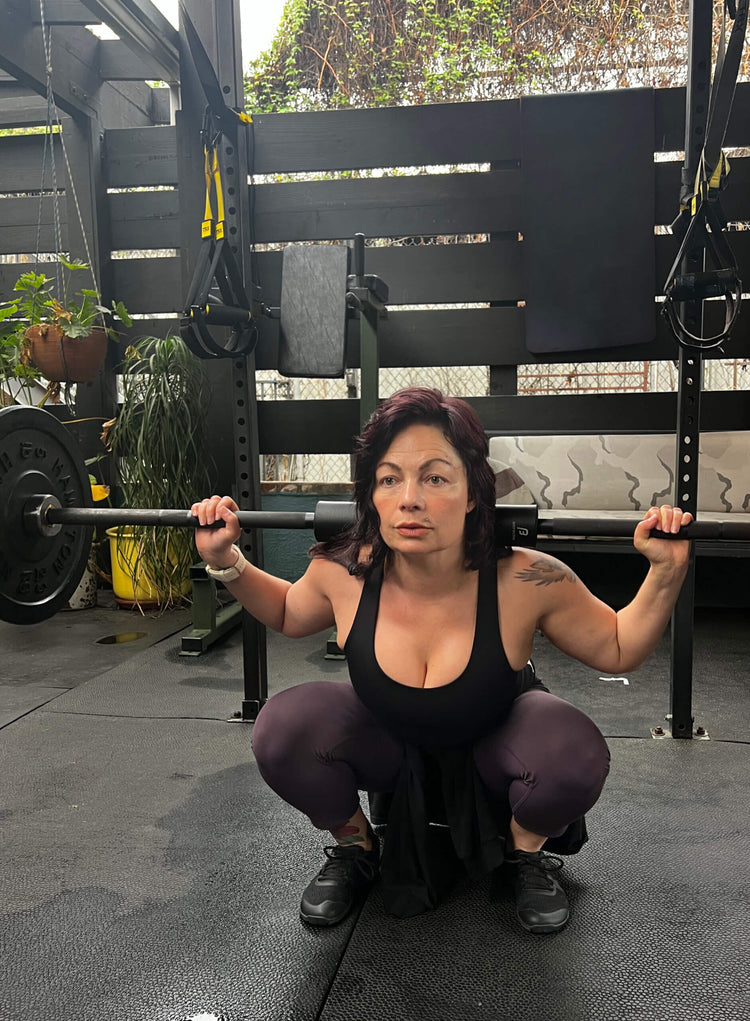
5 Tips for Being Fit Over 40
This blog was written by Xero Shoes affiliate, Kristina Cañizares Celebrity trainer and owner of Fit & Bendy in Los Angeles www.fitandbendy.com Instagram: @fitandbendy Fitness Over 40: 5 Realistic Tips to Get In Shape What does it look like to be fit over 40? Is it possible to get in the best shape of your life in your 40s, 50s, and beyond? The evidence says yes! As long as you are alive, your body will respond to exercise, building muscle and gaining mobility. Age doesn’t stop you from taking up a new sport, falling in love with trail running, learning to do a split, or joining the pickleball craze. But fitness over 40 does require a shift. As I sidle up to 50 I’ve found that I’m still able to do all the activities I love, I just have to tweak my strategy. Below are 5 pillars of my fit-over-40 training approach that I use both for myself and my clients for productive, effective, injury-free fitness. How to Get in Shape at 40: 5 Fitness Tips to Follow: Tip #1: Focus on Fitness Fundamentals When you’re young you can skip steps. Coaches will often throw you into drills where you can learn by making mistakes, falling down, trying again. When you’re older the repercussions from over-training, poor form, and generally flubbing a move can be more serious. If you’re learning a new physical activity, start with the basic movements and make sure you are confident and strong before progressing. Train in short sessions and build stamina and strength rather than going bonkers on Day 1. Don’t push through pain, train when you’re super sore, or try things that you can only accomplish with poor technique. This approach may feel slow, but it’s a lot faster than rehabbing a torn ligament or nursing a swollen knee! Tip #2: Slow and Steady Progressions When you first start working out it generally feels exhausting and difficult for a while. Then you hit a point where it gets easier, feels better, and you get hungry for it. This is when many people get really excited and suddenly want to dramatically increase the intensity and duration of their workouts. Your body will continue to adapt to exercise until you’re dead, but as you age the adaptations happen slower. This means that rapid intensification of an exercise can overload your capacity, increasing injury risk. One of the hardest things for myself and my older clients to learn is to set aside the “more is more” mentality and try to be p-p-p-patient with our bodies. Sometimes more progress comes from lighter weights, less intensity, shorter sessions, and more rest days. More isn’t always better. Tip #3: Mind the Little Things Everyone loves to work the sexy stuff. Let’s get those bulging biceps and perky glutes. But when was the last time you trained your foot strength, wrist mobility, or neck muscles? Almost all of my clients see improved mobility and strength, reduced pain, and better performance when they add in a few short sessions a week designed to strengthen and mobilize often neglected areas. We can’t take anything for granted in our bodies if we want to be able to perform well with longevity. My daily warm-up before any workout focuses on my breathing muscles, neck muscles, feet, and hands. These are areas that are not explicitly addressed in my workouts but greatly improve how I move. Tip #4: Function over Fashion So many fitness programs use aesthetics as the measurement of success. Weight, body measurements, and clothing size may change as a result of fitness but they are a side effect of working out, not the direct effect. The direct effects of working out are to improve strength, mobility, balance, cardiovascular health, and reduce pain and injury. Improving all of those factors helps you move more, and enjoy fun activities. I would argue if all of those factors are doing well, you’re going to look better too regardless of your size. When our primary motivation in working out is cosmetic it’s tempting to skip the above-mentioned fundamentals, push too hard too fast for visible results, and neglect muscles that aren’t going to get noticed in your instagram post. It’s also easy to give up if you don’t see the results you want in the timeline you set for yourself. I try to work out for joy, connection with my body, community, health, and functionality. I’m not immune to the societal pressure around thinness but I know that weight loss obsession does not lead to healthy outcomes most of the time. Tip #5: A Little Bit of Exercise is Better Than Nothing Life is busy. We get tired. Overwhelm is real. Sometimes that workout you planned just isn’t going to happen. It is really easy to get discouraged when life gets in the way of our fitness routines. We know how important it is to be consistent with our workouts, but that doesn’t mean that all is lost. No time for a run, but maybe you have ten minutes to dedicate to the bare minimum? On those better-than-nothing days I ask myself: What do I need to feel good right now? Sometimes it’s a set of calf raises at the kitchen counter. Or single leg mini-squats in line at the grocery store. Or a sprint up the staircase in the airport. Sometimes it’s one, long forward fold with some deep breathing while on hold with the DWP. Whatever it is your body is asking for, give it what you can. That way when your schedule clears up and you have time to work out again your body doesn’t feel completely neglected. I love these little mini-workouts on my busiest days as a way to relieve stress and stave off tightness. It’s also a short invitation to check in with my body and remember that I am a person. Sometimes stress makes me forget that! See also: Kristina's informative video prepping your feet for walking in minimalist shoes. https://youtu.be/rPyfZ2MAgHs?feature=shared Reflecting on My Fitness Goals Over 40 These days I cherish my workouts more than ever before. They are mine - a time to focus exclusively on my own needs and goals and leave the clamor of life behind for a moment. They are my investment in the future, since I appear to have not died yet and old age may actually come for me. This gym joy did require an adjustment from my younger self’s approach to fitness. I was a card carrying member of the “Go Hard or Go Home” club, highly competitive and driven. I wish I had adopted some of the above tenets earlier, but some lessons can only be learned the hard way. I just want to stay above ground and healthy so I can keep learning. Kristina is an affiliate Xero Shoes. The content of this post does not constitute and is not intended to be a substitute for professional medical advice, diagnosis or treatment. Always seek the advice of a physician or other qualified health provider with any questions or concerns you may have about your health or a medical condition.
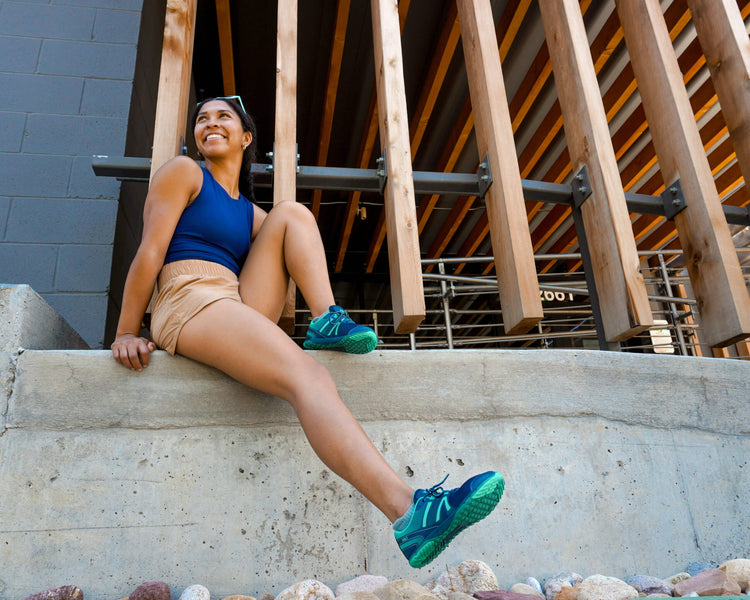
Are Barefoot Shoes Beneficial for Active Recovery?
In the past few years, “recovery” has become a buzzword, as the need to take care of our well-being is paramount, whether you're an athlete, a parent, an executive, or simply someone who appreciates comfort. Any product or service that helps us cope with daily stressors is now considered a form of “recovery.” We often underestimate the importance of allowing our feet the time and space to recover. However, Google “recovery shoes,” and you’ll find lists of highly cushioned shoes and sandals, some made almost entirely of foam. But what if there’s a better way to recover? In this blog, we’ll explore the importance of foot recovery and how Xero Shoes can be a tool for recovery. Why Are Barefoot Shoes Good for Recovery? Our feet bear the brunt of our daily activities, yet they are often the most neglected part of our body. With 26 bones in each foot and more than 200,000 nerve endings, it’s time we optimize our feet for recovery. Traditional shoes can restrict natural foot mechanics, like impeding your feet' natural flexion and extension. The shoes themselves can also have a narrower fit that feels tighter on your feet. Xero Shoes are designed to facilitate natural movement, providing your feet with the freedom they crave. Traditional shoes can impede your feet' natural flexion and extension, hindering recovery. With Xero Shoes, you'll experience a liberating sensation that encourages a more natural gait, promoting better blood circulation and aiding recovery. A Podiatrist Recommends Barefoot Recovery Shoes Dr. Alissa Kuizinas, DPM, is a podiatrist passionate about natural foot function. Here’s what she says about the benefits of wearing barefoot shoes. “Going barefoot allows your feet to feel and interact with the ground surface, allowing for improved muscle reactivity and postural changes, along with adaptation of the foot muscles and strengthening.” The foot-shaped design of barefoot shoes also aid in active recovery, allowing your feet to activate while still feeling comfortable. Dr. Kuizinas agrees, “Since the shape of the shoe accommodates the toes and the natural splay and expansion that occurs with walking, they often allow for better shock absorption and better use of the muscles of the feet and legs. They prevent the compression and restriction to the front of the foot that occurs with traditional shoes.” What to look for in recovery shoes: Natural Comfort – A barefoot shoe design encourages a more natural gait, reducing the impact on joints and muscles. This can be especially beneficial for recovery after intense workouts or long periods of standing. Lightweight and Flexible Design – A pair of recovery shoes should not feel constricting on your feet. Look for shoes with a roomy toe box that lets you wiggle your toes or scrunch your feet. The feather-light feel and flexible design of Xero Shoes make you feel barefoot. The best sensation is when you forget you’re wearing your recovery shoes. Breathability – Just as you want your feet to relax, you also want to ensure they’re getting proper airflow. Look for shoes constructed with breathable materials, like mesh, hemp, or cotton, that ensure your feet stay cool and dry. Breathable shoes benefit post-exercise recovery, preventing moisture buildup and potential discomfort. Versatility – Recovery doesn't mean compromising on style. Whether relaxing at home, weightlifting at the gym, or running errands, you can do so in style while prioritizing your foot health. A good pair of recovery shoes or sandals don’t have to look like they’re for recovery. A bonus: any pair of Xero Shoes is designed with your feet’s comfort in mind so you can pick from over 50 shoes, boots, and sandals. Your feet are the foundation of your mobility, and their well-being should be a priority. Letting your feet recover is not just a practice. It’s a holistic approach to recovery that enhances your daily life. What Athletes Say About Barefoot Recovery Shoes Xero Shoes Partner, Pilobolus Dance Group “At Pilobolus, we work our bodies hard in rehearsals and performances, and to do this, we need maximum movement and mobility for our feet. Wearing Xero Shoes when we are off duty or on rest days allows us to continue to move with the same mobility as our usually bare feet, with comfort and ease.” Emily Kent, Education Director Xero Shoes Partner, Team Novo Nordisk Cycling Team “After a 5-6 hour ride, I put on my Xero Shoes and my feet can breathe. They feel freeing and give me so much support when I’m walking. It’s amazing, especially after wearing tight cycling shoes.” Jan Dunnewind, Pro Team Cyclist “When I first put on Xero Shoes I was surprised with how they felt because my feet could actually move and spread out. They feel really great for recovery after a long day on the bike. From the first day, I knew these were the shoes I want to use and don’t want to switch back to any other shoes.” Przemysław Kotulski, Development Team Cyclist Your Post-Activity Recovery Partner Prio BUY HERE HFS II BUY HERE Sunrise BUY HERE
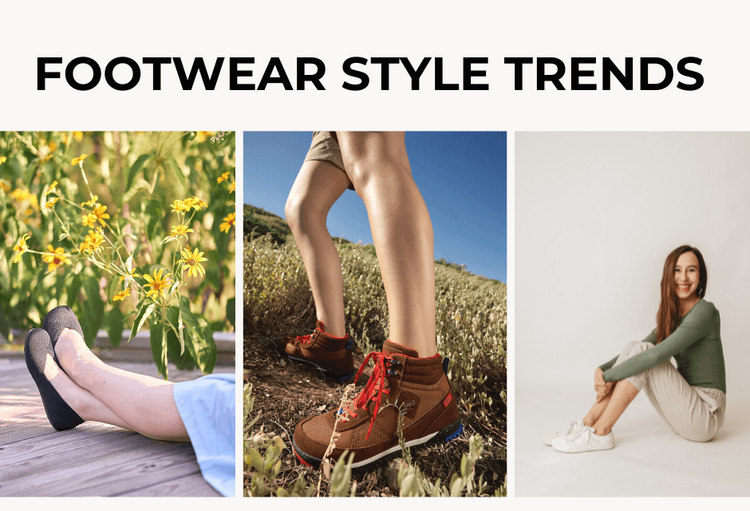
These Footwear Style Trends Will Rock 2024
Fashion enthusiasts and trendsetters alike eagerly anticipate the fresh wave of styles that will dominate the footwear scene in 2024. We've got an exclusive sneak peek into the hottest trends for 2024, straight from the experts: Kristina Funck, Xero Shoes’ talented Design Director, and Megan Elias, the creative force behind our Product Merchandising. Plus, we've tapped into the wisdom of barefoot shoe expert Anya Jensen, the visionary founder of Anya's Reviews. 5 Fashion Trends for 2024 Barefoot/Wellness Trend Get ready to kick off the year on the right foot – quite literally! The buzzworthy trend for 2024 is all about embracing barefoot footwear styles. According to data from trend forecasting platform WGSN, searches for "barefoot training shoes" have surged by a staggering 450%, reflecting a growing interest in comfortable yet stylish options. Enter Xero Shoes, where minimalism meets functionality. Xero Shoes’ iconic Genesis sandal and DIY Sandal Kit, the epitome of a barefoot sandal, offers an almost invisible feel on your foot, aligning seamlessly with the trending need for packable and travel-friendly options. The rise in barefoot interest is more than just a fashion statement; it's a testament to the evolving consumer mindset centered around well-being. Holistic wellness has become more mainstream, and Xero Shoes is uniquely positioned to deliver a positive experience that goes beyond mere style, making wearers feel like an integral part of the barefoot movement and community. Quiet Luxury We also see the Quiet Luxury trend continue into 2024. Quiet Luxury is a move from the more is more and joyful maximalism - YOLO trends that dominated post-pandemic style. Quiet Luxury is defined by more timeless silhouettes and colors, clean lines, and refined materials. It is meant to be understated, yet eye catching. Quiet luxury is a turn towards a more sustainable industry. Versatile, timeless pieces are intended to slow trend cycles and increase closet longevity. Key elements of this trend are earthy natural tones like Nutshell brown, classic footwear styles like ballerina flats and Mary Janes. Styles like Xero Shoes’ Phoenix leather ballet flat, Cassie Mary Jane, men's Glenn are perfect for this trend. Gorpcore Outdoors The post-pandemic consumer continues to embrace the outdoors as a fitness playground. The "Gorpcore" trend is still relevant in 2024. In Outdoor Performance, we may see an uptick in the more core/monochromatic colors. Quiet Luxury is also spilling into the Outdoor space at the high end, this will trickle down to our future FW24 launches, so stay tuned! Styles like our Mesa Trail II and Ridgeway are the perfect shoes to take on the trail (or the street). Retro The refined soccer trainer trend (or "Football Sneakers" continues to have momentum in 2024 (think: Adidas Samba) thanks to Gen Zers. A nod to iconic retro sneakers, you can wear retro styles with business casual attire. Xero Shoes’ gum-colored outsole sneaker and low-profile sneakers, the Prio Suede, or the court-style Kelso, are great picks for this look! Whites and Lights Anya Jensen says, “next year we're going to see a lot of whites and lights in footwear. Black will never go out of style, but white is enjoying a special moment as a fresh and bright shoe color all year round. Yes, winter whites are totally a thing. I love how simple it is to style this trend because it's all about how white lifts an outfit and makes it instantly more crisp. That means you don't need to overthink it.” Follow Anya on Instagram for more style tips. Xero Shoes’ Dillon sneaker and Nexus Knit are perfect all-white shoes to fit this trend. Trendy and Stylish Xero Shoes Genesis BUY HERE Glenn BUY HERE Phoenix Knit and Leather BUY HERE Ridgeway BUY HERE Prio Suede BUY HERE Dillon BUY HEREVIEW ALL TRENDY SHOES Get ready to elevate your style game and make 2024 your most fashionable year yet! Browse our selection of men’s and women’s shoes to upgrade your footwear style.
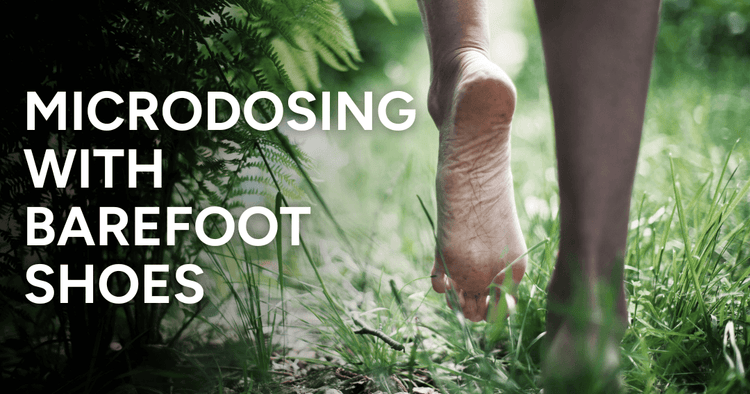
Microdosing with Barefoot Shoes: What to Know
Do you find yourself constantly on your feet or on the move? Whether an athlete, a parent, a nurse, a teacher or anyone else, your feet are the unsung heroes of your daily grind. And they’re often neglected and constrained by conventional footwear. But there’s a unique approach to building foot strength and improving foot health - microdosing with barefoot shoes. These zero-drop shoes are designed to mimic the feeling of walking barefoot while providing a thin, flexible sole for protection. The idea is to allow the foot to move naturally, engaging the muscles and joints that are often ignored in traditional footwear. Traditionally, microdosing has been associated with the controlled and measured intake of psychedelics. However, if you apply the concept of microdosing to barefoot shoes, it makes sense: adopting a gradual and measured approach transitioning from traditional, highly cushioned and overly supportive footwear to minimalist, barefoot shoes. Here’s how you can “microdose” with barefoot shoes: Gradual Transition "Microdosing" implies taking small steps, both figuratively and literally, towards embracing the natural movement and biomechanics of the feet. One way to do this is simply by walking in barefoot shoes. A research study by Dr. Sarah Ridge found that over eight weeks, barefoot/minimalist shoe walking is as effective as foot strengthening exercises in increasing foot muscle size and strength. A 2021 research study in Nature suggests that six months of regular minimal footwear use is sufficient to gain full strength, which may aid healthy balance and gait. This gradual process allows the feet to adapt to the new movement patterns and build strength over time. Adapt Microdosing involves an adaptation period where users observe how their bodies respond. Transitioning to barefoot shoes requires an adaptation period during which foot, ankle and leg muscles adjust to the new conditions. You may feel tighter calves or feet as you adapt - this is normal. As you’re adapting to barefoot shoes, start incorporating “foot core” into your daily routine, like the tips in that blog from Xero Shoes Partner and Born to Run coach Eric Orton. You can actually train your foot core to help prevent running-related injuries according to a study by Dr. Sacco. Once you feel comfortable with everyday activities in barefoot shoes, you can try gradually transitioning to run. Eric has a fantastic video with tips to integrate barefoot shoes into your running routine. GET TIPS HERE Observe As you transition to barefoot shoes, observe your gait and balance. Our feet consist of numerous muscles, tendons, and ligaments that play a crucial role in maintaining balance and supporting our body. Microdosing with barefoot shoes allows these muscles to engage and work harmoniously. Plus you may find they’re more comfortable with the zero-drop design, wide toe box and thin, flexible soles, that give your toes room to wiggle. Closing Out: Microdosing with Barefoot Shoes In essence, the concept of microdosing with barefoot shoes involves a mindful and gradual approach to allowing the feet to reconnect with their natural function. It's about taking small, intentional steps towards healthier, stronger feet. Microdose With Xero Shoes VIEW ALL PRODUCTS
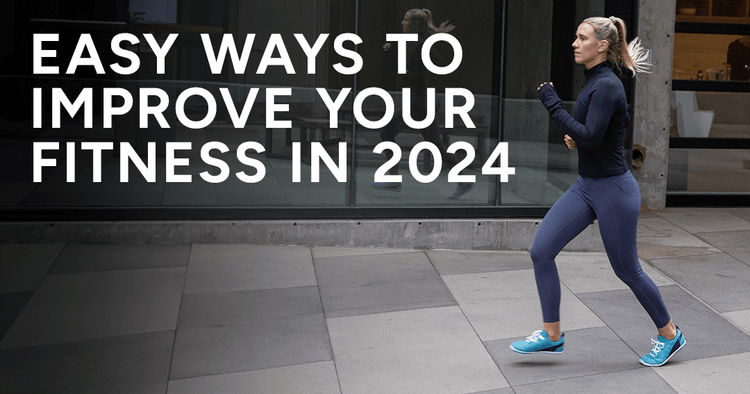
Easy Ways to Improve Your Fitness in 2024
We asked fitness experts for achievable tips to elevate your fitness game this year. We're not talking about extreme makeovers; we're talking about small, sustainable changes that can make a big difference. Keep reading for expert tips on walking, running, workouts, and more. Your Fitness Experts Muscle by Maria Karl of LIV Better Fitness Kristina of Fit & Bendy Born To Run Coach, Eric Orton Muscle by Maria "Walking is a simple, yet effective way of improving your overall health. Studies have found that aiming for a daily step count of 7,000 to 10,000 steps can contribute significantly to: Cardiovascular fitness Weight management Mental well-being Cognitive function Prevention of chronic diseases. Additionally, regular walking increases daily NEAT (Non-Exercise Activity Thermogenesis), which plays a significant role in your overall calorie burning and metabolic health." Follow Muscle by Maria for more fitness tips. www.musclebymaria.com Instagram: @musclebymaria Karl of LIV Better Fitness "Are you feeling the effects of aging, such as aches and pains you didn’t have before? As a busy parent, age seems to catch up to you in a hurry. You need to address these things now, rather than later. Everyone focuses on strength training and cardio, but few prioritize mobility and flexibility. All that you need to do is dedicate 10-15 minutes each day to basic stretching and mobility exercises, focusing on quality movement and range of motion. Target your weaknesses, rather than avoid them. Incorporate these into your warmups and cool-downs to save time. Trust me, your ankles, knees, hips, and shoulders will thank you." Follow Karl of LIV Better Fitness for more fitness tips. www.livfitkarl.com Instagram: @LiveFitKarl Kristina of Fit & Bendy "A little bit of exercise is vastly better than no exercise at all. Not every workout has to be a 10 mile uphill sprint! If you are feeling tired, busy, or injured, just do what is available to you even for just a few minutes here and there. Doing clamshells while watching a movie is still exercise, and it’s still worth doing." Follow Kristina Cañizares of Fit & Bendy for more fitness tips. www.fitandbendy.com Youtube: @FitandBendy Born To Run Coach, Eric Orton "How To Start Running Successfully: The biggest mistake beginning runners make is running too hard and doing it for an outcome like weight loss or fitness. So try these steps for success:When first starting, only run at a FUN, enjoyable effort. Include walk breaks to keep the effort easy. Run for as long as it is fun, and then stop and walk. Run less, but more often. Keep it fun, and the fitness will follow." Follow the Born to Run Coach, Eric Orton, for more fitness tips. www.ericorton.com Youtube: @BornToRunCoach Instagram: @borntoruncoach New Xero Shoes For Your New Fitness Goals 360 BUY HERE Forza Trainer BUY HERE Prio Neo BUY HERE Prio BUY HERE HFS II BUY HERE Speed Force II BUY HERE VIEW ALL PERFORMANCE SHOES



